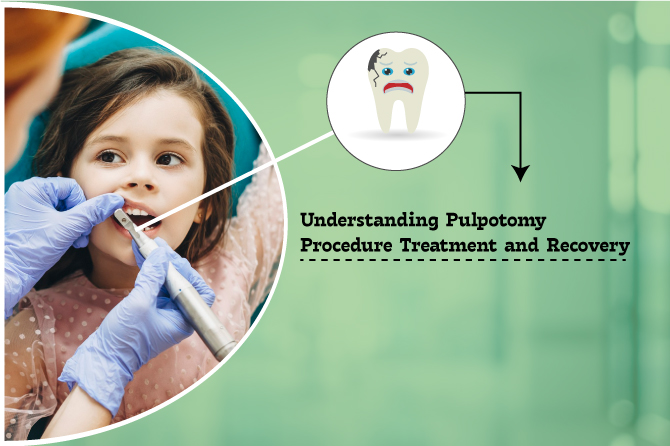Understanding Pulpectomy: Saving Baby Teeth from Decay and Infection
Pulpectomy helps save baby teeth by removing infected pulp, treating decay, and preventing infection, ensuring healthy smiles for children.
Pulpectomy
A pulpectomy is a dental procedure performed on a primary (baby) tooth when the pulp—the nerves and blood vessels inside the tooth—has been severely damaged. The treatment involves removing the pulp, thoroughly cleaning the root canals, and filling them with a resorbable material. This helps save the tooth from infection or decay when it’s too compromised for a simpler procedure like a pulpotomy (partial pulp removal).
Indications
A pulpectomy may be recommended when:
- Severe decay: Cavities have reached the pulp, leading to pain, infection, or abscess formation.
- Irreversible pulpitis: The pulp is inflamed beyond repair and cannot heal on its own.
- Pulp necrosis: The pulp has died, often due to trauma or untreated decay.
Procedure
- Anesthesia: The tooth and surrounding area are numbed with a local anesthetic.
- Access opening: A small opening is made in the tooth to reach the pulp.
- Pulp removal: All pulp tissue is carefully removed from the chamber and root canals.
- Cleaning and disinfection: The canals are thoroughly disinfected to eliminate bacteria and debris.
- Filling: The empty canals are filled with a resorbable material such as zinc oxide eugenol (ZOE) or calcium hydroxide/iodoform.
- Restoration: The tooth is sealed with a filling or crown to restore strength and prevent further damage.
Benefits
In children, a pulpectomy not only relieves pain and infection but also helps preserve the tooth until it naturally falls out. Maintaining the space for permanent teeth reduces the risk of crowding, misalignment, or the need for orthodontic treatment later.



